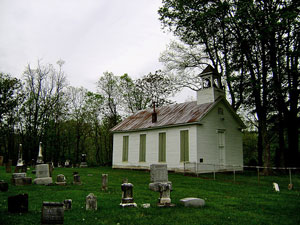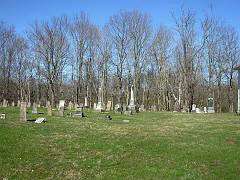Formed in 1958 the Clermont County Historical Society has recorded Clermont County Ohio history for over 50 years.
East Fork Began Long Before Park
By Robert Porter, East Fork Park Ranger
On a busy weekend, East Fork State Park has thousands of people pass through its gates. The boat ramp parking lots swell with cars and trailers usually before lunch. Sand on the beach seems to disappear as bodies sprawl out on towels and blankets to absorb the day's sun. By mid-day, grills are smoking with hotdogs and hamburgers throughout the picnic areas. Canvas tents, small house trailers, and luxury coaches fill the asphalt parking pads in the campground.
But what was there before all this? Going back in time, try to visualize the area before the fast paced hustle and bustle of modern man.
The East Fork of the Little Miami River, which forms East Fork Lake, begins near the Highland County boundary line. Winding its way though Perry Township in Brown County, it enters the eastern border of Clermont County in Jackson Township near Marathon. From this point it flows south through Williamsburg, Batavia and Miami Townships and empties into the Little Miami River near Milford.
The valley was forested, had fertile soils and was abundant with wild game. About two to three thousand years ago the area attracted a group of people known as the Mound Builders. The cultural remnants of these groups are the earliest archeological evidence found in the East Fork Valley. These artifacts were found in mounds of soil, hence their name - Mound Builders.
Evidence indicated that there were two distinct groups of people: the Hopewell and Adena Indians. Each of these groups had its own unique type of dwellings, pottery, weapons, etc. Two different types of mounds were built.
The first, called a hilltop mound, was built for defensive purposes. Two mounds of this type are located within the park's boundary lines. An Indian burial ground has also been found. The second type of mound built was a geometric shape that had ceremonial or social significance. However, none of these are located in the park.
After the signing of the Treaty of Greenville in 1795, the first white settlers state to move into the region. Revolutionary War soldiers from Virginia were the first East Fork land owners… Among the first settlers was John Collins. Collins had a stone home where the beach is now located, on the sough side of the lake. His son, General Richard Collins, also constructed a brick house which at one time was considered one of the most beautiful homes in the valley. It was built just a short distance from his Father's house.
Isaac Higbee and his wife, Sophia, were among the first inhabitants to come with John Collins. Their home was built near Williamsburg-Bantam Road in 1809. This home is a good example of the early native stone houses, and is to be reconstructed in a Sharon Woods park site.
Thomas Pinkham became a doctor and had his practice in Bantam from 1828 to 1877.
The house and some of the barns on the Pinkham farm can still be seen on the north side of S. R. 125 about .6 mile west of Bantam Road. In 1973, the farm was placed on the National Register of Historic Places.
The Old Bethel Church was also placed on the Register in 1978.

Other points of interest located around the park include a cemetery behind the Old Bethel Church. This cemetery contains the graves of: U.S. Grant's grandparents, the Rev. John Collins, five American Revolutionary War veterans, two Spanish-American War veterans, one veteran from Work War I, and one from WW II, II, just to name a few.

Another cemetery can be found just north of Bethel. It is a small plot with several mid-19th century grave stones, including that of Senator Thomas Morris.
There were also two gold mines that have been closed. One was located on the north side of the East Fork in the vicinity of Elk Lick. The other mine was near the Twin Bridges. This mine, on the Robert Wood farm, was worked in 1869. Neither mine was very productive.
One of the oldest homes in Tate Township is located in the project area. Mike Strickland of Cape May, New Jersey constructed the home on the Kopp farm off Macedonia Road between 1810-1815. Strickland is also buried in the Old Bethel Church Cemetery.
As time passed, the East Fork Valley became more populated, and more farms began to spring up. Several farm ponds still exist around the park marking the once-productive homesteads.
In 1928 a study was conducted in the Little Miami River basin to determine if a flood control program was needed. From the information collected it was decided that no control was warranted. But 1937 brought heavy rains, and floods caused havoc in the entire area…Funds were appropriated, construction began, and the East Fork Lake and Dam became operational in 1978.
The remainder of the area is maintained and operated by the Ohio Department of Natural Resources. It seems appropriate that near the entrance of the park sits a reminder of our forefathers.

